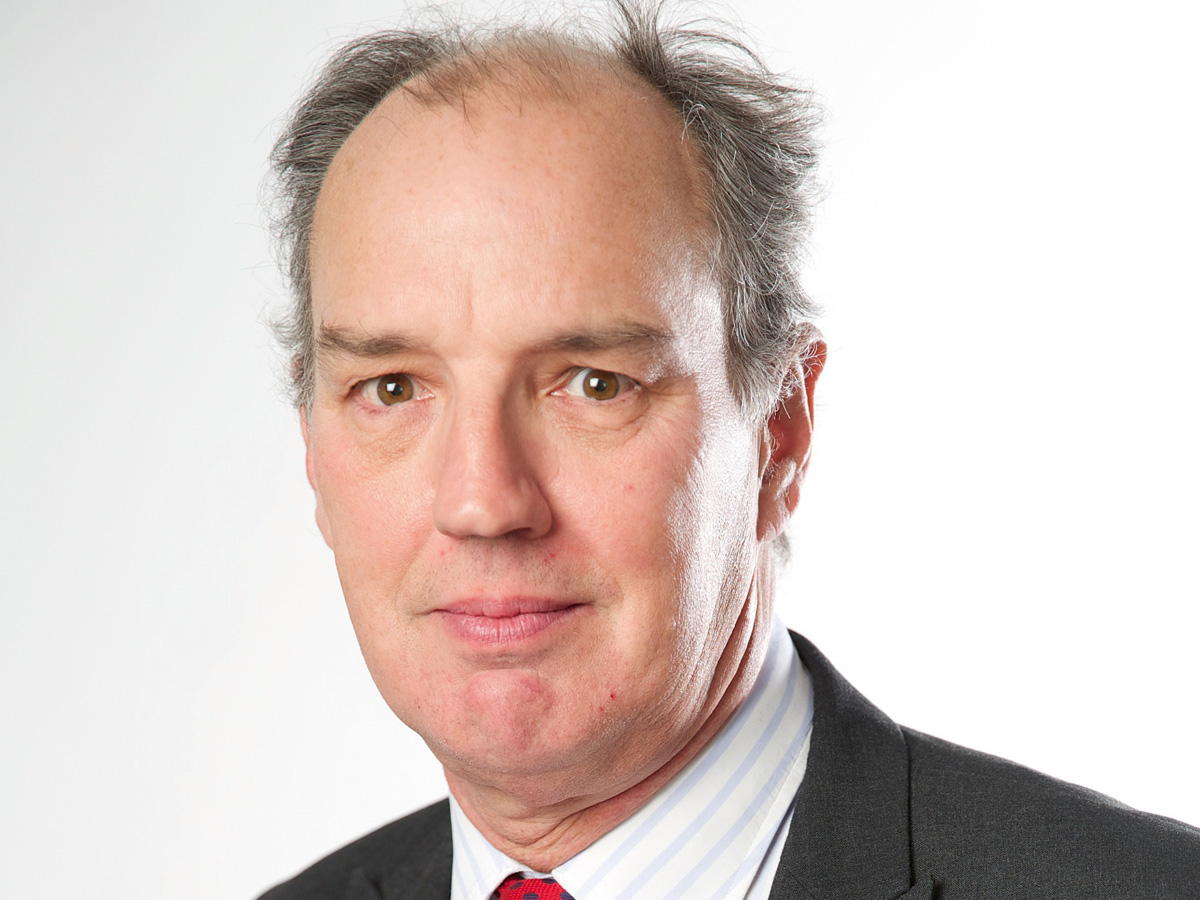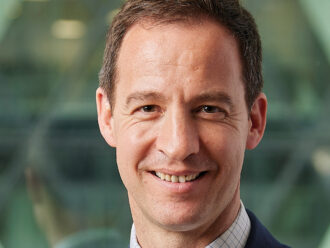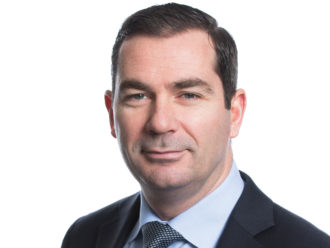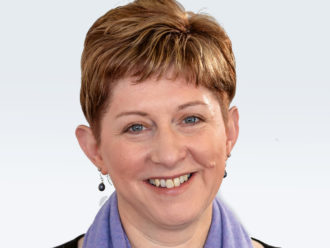You have been Nuffield Foundation’s investment director for around 20 years. What changes did you make when you took over in 2001?
We had an effective chair at the time called Baroness Onora O’Neill, who is a moral philosopher. We had a single multi-asset manager working with a discretionary mandate and she thought it was wrong that the charity and its trustees should be so separated from their financial wherewithal. So, the decision was taken to bring the asset allocation in house. Cambridge Associates were setting up at the time and were very helpful in working this through with us.
My background is in art history, then charity finance, but not investment management, so I read everything particularly carefully to understand what was going on and the underlying principles and what stood behind them. As a result we ended up with this logical, but, to some, odd portfolio based on first principles, rather than the then orthodox current knowledge.
At about that time, I went on the new Yale Endowment Management Course featuring luminaries such as David Swensen, Jack Meyer, Elroy Dimson and Charlie Ellis. It was a real eye opener.
Your portfolio is 10% short-dated gilts, 70% global equities and 20% private equity. Why take such a simple approach?
It is a simple portfolio so we are not spread too thinly. Some people describe it as aggressive, but we don’t think of it in that way. We think that because our enemy is inflation, we cannot avoid real assets: property and equities.
So, the question is, of these, which is going to make you the most money? The portfolio has been the same for 15 years. When we first set the portfolio up, we moved away from a single manager who took all the decisions to making the investment asset allocation decisions ourselves. We had a more conventional portfolio: a UK allocation, a separate overseas allocation, a bond manager, some property and some private equity.
Over the next couple of years, as we digested what was going on, we dropped the property allocation because that had liquidity issues like private equity but without the additional return. So, why own property, we thought, if you could have private equity instead for your illiquidity tranche? Later we dropped the regional equity allocations, shifting to global mandates.
And you have never fundamentally changed that approach?
At the height of the financial crisis, we were persuaded to have some form of synthetic product for gilts to get some marginal yield pickup. When we looked at all the counterparties we thought: “This is not what we want.”
So, we now own the gilts directly. We only hold Bank of England short-dated gilts and we expect no return from them. It is absolutely safety. We feel happy with the risk we are taking.
How is each component part broken down? What are the gilts, global equities and private equity?
The portfolio is constructed on the basis of having an amount of money, which under all circumstances is safe: 10% in short-dated UK gilts – and if there is a problem with the counterparty then society will have bigger problems – and we expect that to help us ride out short- term volatility.
The next part: 70% in global equities, we have no particular insights into which part of the world is going to do better, so we choose global managers. We cannot diversity away from equities because of inflation, so we try to diversify within the asset class.
So, we have five equity managers who are appointed because they have completely different styles of investing to each other. When we look for a manager, we look for someone who is orthogonal to other managers, so none of the managers should be correlated with each other.
They should be uncorrelated but not necessarily negatively correlated. We keep them the same size and rebalance annually. We take profits from one to give to underperforming managers.
This has worked against us recently because growth investing has attracted a premium and value investing has suffered penalties, but that is the process we use.
We benchmark all this to 90% equity, 10% short-dated gilts and have beaten that over 19 and 10 years, respectively. We put private equity in because the extra returns compensate for the low returning cash we have to hold. Effectively, the whole portfolio is trying to deliver as much as it can, because of our volatility tolerance.
And the important point here is we do not have liabilities, we just hand out grants. If we want to stop paying money, we can stop paying money. For us, it is better to have trustees who can hold their nerve in a crisis than a lower volatility, lower returning portfolio.
Do you see any reason to change your approach?
Because we have done it the same way for so long, I keep thinking we must change it. A few years ago, we put a small amount in a hedge fund portfolio to see if it would return more than our gilts. It didn’t. It was quite complex to manage as well, so we dropped it.
When you look at inflation, which is our main worry, the answer is going to be equities and real assets. It is difficult to see how we would change our current equity dominated portfolio, unless bond yields really change.
How do you view the current inflationary environment?
We tend to think about the portfolio in terms of its duration, not just the bond component. We aim to be neither long nor short duration. Inflation is clearly a worry, because it is going to affect our cost base, but what is confusing about inflation is it is a relative question. You have UK inflation, which affects how much we have to pay to do our charitable work, then there is inflation in other countries, notably the US, and they are different numbers that affect how we earn our money.
The combined effect is on how we spend and invest and is driven by our assets basically being 70% nominated in dollars. It is a non-UK portfolio, and we hope that holding non-UK assets might be some form of mitigation against high UK inflation.
Benchmarking our assets against inflation is central to what we do. What we did a few years ago was important: we chose a number that represented the foundation’s wherewithal and set an objective to maintain that number as the real value of the foundation.
We indexed that number against our experience of inflation – and we have a number now which we know the portfolio should be worth had it kept pace with inflation. If the portfolio is higher, than that it is okay and we can spend more. If it is lower than that it is okay, as long as it is within a volatility boundary of 16%, otherwise we will have to spend less.
As long as the assets are within that range we are happy. If inflation reduces the level of assets we have, we might have to think more about our spending. Or if the index line goes up a lot, because of inflation, that also affects how we spend. It is determinative about how we think about our spending. At the moment, we are so far in excess of where we ought to be.
And what makes a charity is what you spend. It does make our tolerance volatility very high, because we do not regard the highest value of our portfolio as our normal value.
In a sort of Boris Johnson way, many people seem to believe that the most money you have is also the normal money to which you are entitled – the point being believing two contrary things at the same time. We get away from that by regarding a different number, and that is what we should have.
Are you looking at anything new in your portfolio going forward?
Like everybody else, we are looking at how to incorporate ESG. We are not looking at new asset classes. We have a stable structure.
But you adopted an ESG investment approach about 20 years ago. Why was that important?
It was just before I arrived at Nuffield. We adopted it because the Charity Commission required charities to specify if they had an ethical policy. We decided not to invest in tobacco. Interestingly, not because tobacco was bad for people, but because the industry had abused the research process – and it was the research process that mattered to us being a science funder.
More recently, it has developed further and like everyone else we think about it greatly: how we align what we are trying to do and how we earn our money.
How challenging was ESG implementation in those early days?
It was fine. It was much easier. You just screened things out. It was a bit more expensive. You would buy a segregated fund and say: “Do not invest in tobacco,” and off you went. It was straightforward. It has become more difficult as asset values have gone up and access to segregated portfolios has become more restricted.
How has your ESG approach evolved into what it is today?
How we express these responsible investing characteristics has shifted from excluding things to understanding and engaging. We do recognise that everything, all companies, have good and bad elements and what we try to do is make sure managers understand an on-balance test: because just as we are delegating stock selection to managers, we are delegating our moral judgments to them as well. So, for us, it is important to understand the moral out- look of managers in particular areas.
What is the central element of your ESG investment now?
We have a responsible investment policy made up of three things: how investment should be aligned with how we spend, we don’t want to exploit vulnerable people and not participating in unsustainable businesses. It is important for us that our managers can exercise an on-balance test.
Much is made of the continual drive towards ESG in institutional investment: how do you view it?
It is such an enormous and new eld that everybody is trying to learn the best ways of doing things. It is difficult for the industry. It is an industry that is used to selling and using its proprietary insights. Whereas with ESG it is most successful when you are collaborating. There is a ladder within ESG, from not interested to very interested. And what most organisations struggle with is where managers fit.
How do charities differ from other forms of institutional investment?
With charity investing you have moral liabilities, not legal liabilities. That means we are not afraid of risk in the same way. Secondly, you can increase or decrease your beneficiary pool at the trustees’ discretion. Thirdly, you decide how you are going to serve your beneficiaries: whether by money or services. It is a completely pure investment play. And you think what is stopping me from making the most money I can.
What has your many years of experience taught you about investing?
I have been in the same place for some time now, the best part of 20 years. We have made 11% over that time, which is a good number.
I have been thinking about a phrase ‘Il gattopardo’ from The Leopard by Giuseppe Tomasi di Lampedusa. It is used in Italy as a phrase which means: Everything changes, but everything stays the same. I have been thinking a lot about this.
So, when you think about the long term, I don’t think there is any long term – the long term is just too long to be investable. What you have is a series of short terms joined together. Nobody thinks about it as the long term, because they are too busy with five-year chunks. It is a series of short terms, all stitched together. That makes long-term investing difficult.
What is your outlook over those short terms?
Our assumption is to carry on working the way we have been. If bond yields change and reverted to something like they were 20 years ago, that would be interesting. At the moment there is little between earning nothing and equity-style returns – there is nothing in the middle. You would have to return to a more normal environment without quantitative easing.
What is the biggest investment lesson you have learnt?
There are false gods. You need moral courage to make decisions that you are certain are right, why they are right and understand why they should work. Like a concept such as the equity risk premium – you have to have confidence in that – but you should be wary of things you have less confidence in.
There are things in investment that come and go, that do not have the intellectual underpinnings. On top of that, there is too much caution. What I call reckless caution.





Comments